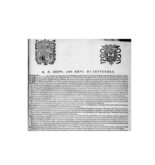F. Bozzi, Le spire della vipera. Aderenti e aderenze dentro e fuori lo stato visconteo-sforzesco fra Tre e Quattrocento, Università degli Studi di Milano, Dottorato di ricerca in Storia, cultura e teorie della società e delle istituzioni, a.a. 2019‐2020, tutor A. Gamberini.
La tesi si propone di mettere in luce gli aspetti più caratteristici e rilevanti dei trattati di aderenza nella loro declinazione visconteo-sforzesca, con l’obiettivo di evidenziare lo sviluppo e, soprattutto, i caratteri innovativi di un legame che, destinato a perdurare nell’età moderna, offre una rinnovata chiave interpretativa dei processi genetici di una “nuova” statualità alla fine dell’età di mezzo. Vincoli elastici, flessibili e ritagliati direttamente sulle base delle contingenze in cui venivano stipulati, i trattati di aderenza (o colleganza, accomandigia, raccomandazione, …) conobbero una vasta diffusione nell’Italia bassomedievale e rinascimentale, in particolar modo dalla metà del XIV secolo, e avevano lo scopo di coordinare i principali poteri degli scacchieri italiani e le realtà minori che allignavano dentro o al di fuori degli stessi, in particolar modo i signori rurali o, in qualche caso, le comunità: riassumendo ai minimi termini, il principalis si vedeva infatti garantito sostegno militare, mentre l’adherens riceveva protezione e legittimazioni di vario tipo.
L’utilizzo che i signori – e poi i duchi – di Milano fecero di tale strumento risulta di grande interesse, in quanto Visconti prima e Sforza poi ricorsero con particolare costanza al legame sia per consolidare i processi di state-building interni allo stato, sia i processi di espansione esterni ai confini del principato. Sin dalla metà del Trecento, infatti, i signori di Milano utilizzarono frequentemente i trattati di aderenza per individuare alleati direttamente a ridosso – se non addirittura all’interno – dei territori nemici. Tale meccanismo fu particolarmente sfruttato durante l’età di Gian Galeazzo Visconti, che rese la pressione dei suoi aderenti quantomai efficace contro le potenze avversarie (in particolare Firenze) innervando di sostenitori aree strategiche come la Romagna e la Lunigiana.
Con la morte del primo duca di Milano nel 1402 il vincolo attraversò un lungo periodo di crisi, dovuto alla debolezza di Giovanni Maria Visconti, e fu solo in seguito alla sua violenta scomparsa (1412) che Filippo Maria Visconti poté ricostruire, al pari dello stato, anche la rete di aderenti, declinata dal terzo duca in senso difensivo piuttosto che offensivo. Nel momento in cui la dinastia si estinse e il ducato cadde nelle mani degli Sforza, il legame si ritrovò inserito all’interno dei delicati equilibri della Lega italica: l’aderenza divenne così un modo non più per aggredire i nemici o per difendersi, per definire e profilare la propria sfera di influenza, ormai in qualche modo “stabilizzata” e non più sottoposta a eccessivi scossoni.
Dal punto di vista nei processi di state-building, invece, il legame mantenne caratteristiche costanti nel corso del tempo: tramite le accomandigie i signori e i duchi di Milano riuscirono infatti a meglio vincolare a sé le animate famiglie signorili che punteggiavano gli spazi dello stato, in particolare in aree come il Piemonte e l’Emilia. Lì i trattati, che pure non persero le loro caratteristiche militari, rivelarono tutto il loro potenziale come elementi di coordinazione e di disciplinamento: la loro fortuna risiede proprio nelle loro caratteristiche elastiche, che se da una parte rendevano il vincolo così costruito instabile, dall’altra ne sostanziano l’effettiva modernità, e che ne garantirono la lunga durata (seppur con alterne fortune) ancora per tutto il ‘500 e oltre.
The research proposes to investigate the most characteristic and relevant aspects of the treatises of adherentia under the Visconti and Sforza, with the aim of highlighting the development and, above all, the innovative characteristics of a bond which, destined to last in the modern age, offers a new interpretative key to the genetic processes of a “new” statehood at the end of the Middle Age. Those treaties were elastic, flexible and tailored directly on the basis of the contingencies in which they were stipulated, and the bonds of adherentia (or collegatio, accomandatio, recomendisia, and so on) knew a wide diffusion in medieval and renaissance Italy, especially from the middle of the 14th century: they had the aim of coordinating the main powers of the Italian chessboards and the minor realities inside or outside them, especially the rural lords or, in some cases, the communities; summing up, the principalis was guaranteed military support, while the adherens received protection and legitimations of various kinds.
The use that the lords – and then the dukes – of Milan made of this instrument is of great interest, as Visconti and Sforza resorted with particular constancy to the link both to consolidate the state-building processes inside the state and the expansion processes outside the principality’s borders. Since the middle of the fourteenth century, in fact, the lords of Milan frequently used treaties of adherentia to identify allies close to – or even inside – enemy territories. This mechanism was particularly exploited during the age of Gian Galeazzo Visconti, who made the pressure of his adherentes as effective as possible against the opposing powers (in particular Florence) and made strategic areas such as Romagna and Lunigiana a source of supporters.
With the death of the first duke of Milan in 1402 the bond went through a long period of crisis, due to the weakness of Giovanni Maria Visconti, and it was only after his violent death (1412) that Filippo Maria Visconti was able to rebuild, like the state, the network of adherentes, which the third duke declined in a defensive rather than offensive way. When the dynasty became extinct and the Duchy fell into the hands of the Sforza, the bond found itself inserted within the delicate equilibrium of the Italic League, thus becoming a way no longer to wage war, but was rather used to define and profile the spheres of influence, now somehow “stabilised” and no longer subject to excessive shocks.
From the point of view of the state-building processes, on the other hand, the bond maintained constant characteristics over time: through the accomandigie, the lords and dukes of Milan managed to better bind the restless noble families that dotted the spaces of the state, particularly in areas such as Piedmont and Emilia. There the bonds, which did not lose their military characteristics, revealed all their potential as elements of coordination and discipline: their fortune resides precisely in their elastic characteristics, which, if on the one hand made the bond so constructed unstable, on the other, substantiated its effective modernity, which guaranteed its long duration (albeit with alternating fortunes) throughout the fifteenth century and beyond.



